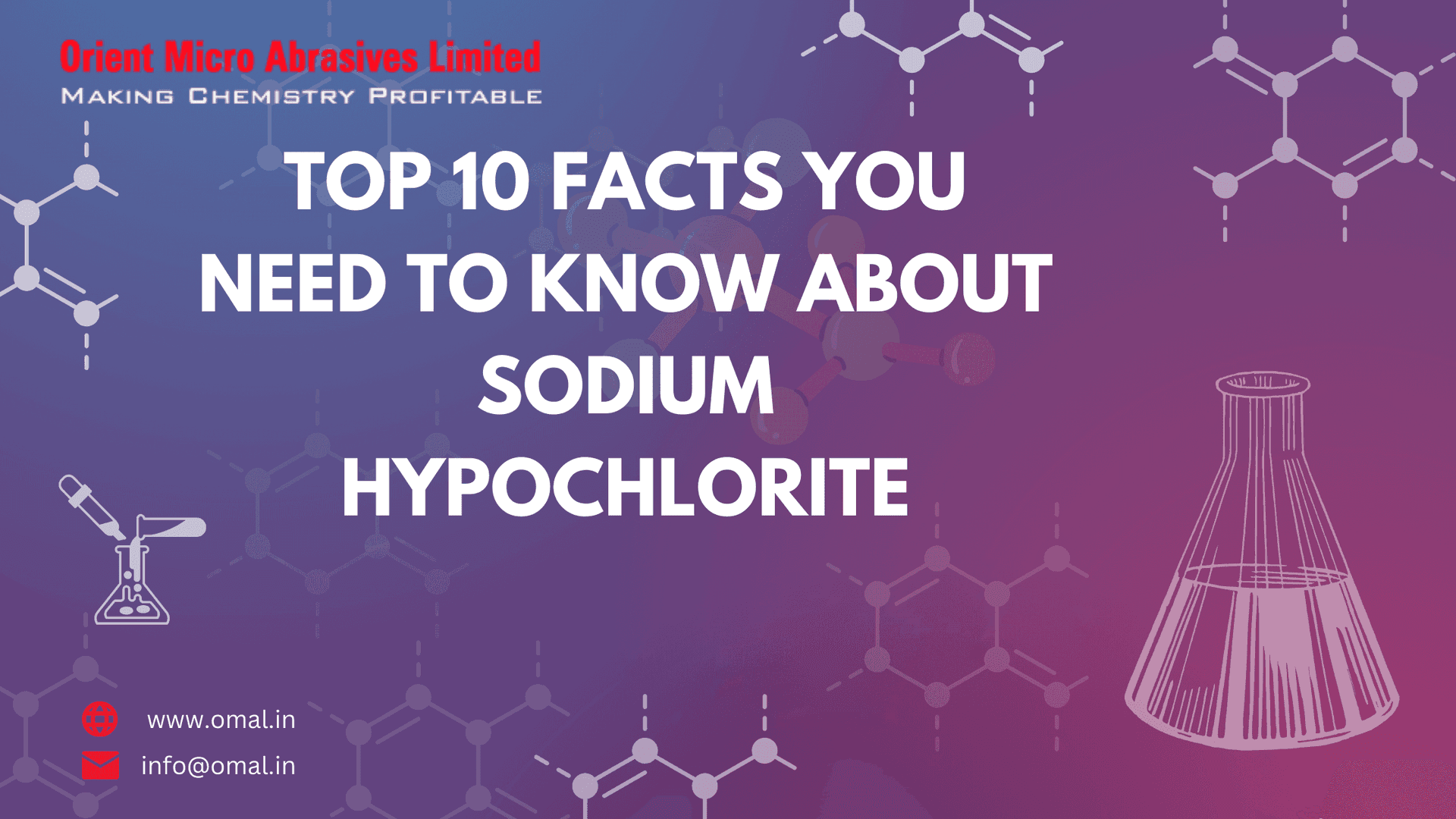
Top 10 Facts You Need to Know About Sodium Hypochlorite
Sodium hypochlorite, commonly known as bleach, is a powerful disinfectant and cleaning agent that has a wide range of applications. It is used in various industries, including healthcare, water treatment, and household cleaning. In this blog post, we will explore ten important facts about sodium hypochlorite that you should know.
1.Chemical Composition and Properties:
Sodium hypochlorite (NaOCl) is a compound composed of sodium, oxygen, and chlorine. It is a pale yellow-green liquid with a distinct odor. Sodium hypochlorite is highly reactive and a strong oxidizing agent, which gives it its powerful disinfectant properties.
2.Disinfection and Sanitization:
One of the primary uses of sodium hypochlorite is as a disinfectant and sanitizer. It is effective against a wide range of microorganisms, including bacteria, viruses, fungi, and algae. Sodium hypochlorite destroys the cell walls and protein structures of these pathogens, rendering them harmless.
3.Water Treatment:
Sodium hypochlorite plays a crucial role in water treatment processes. It is commonly used to disinfect drinking water supplies, swimming pools, and wastewater. By neutralizing harmful microorganisms, it helps to prevent the spread of waterborne diseases and ensures safe water for consumption and recreational activities.
4.Household Cleaning:
Bleach, a commonly used household cleaning agent, is primarily composed of sodium hypochlorite. It is used for sanitizing surfaces, removing stains, and whitening fabrics. However, caution should be exercised when using bleach as it can be corrosive and may cause discoloration on certain materials.
5.Safety Precautions:
While sodium hypochlorite is an effective disinfectant, it should be handled with care. It is important to wear protective gear, such as gloves and goggles when working with this chemical. Direct contact with skin or eyes can cause irritation and burns. Moreover, sodium hypochlorite should never be mixed with ammonia or acidic substances, as this can produce toxic chlorine gas.
6.Shelf Life and Stability:
Sodium hypochlorite has a limited shelf life due to its tendency to decompose over time. Exposure to heat, light, and air can accelerate this decomposition process, leading to a decrease in its effectiveness. It is recommended to store sodium hypochlorite in a cool, dark place and replace it periodically to ensure optimal performance.
7.Environmental Impact:
While sodium hypochlorite is a powerful disinfectant, its use can have environmental implications. When discharged into water bodies, it can react with organic matter and form potentially harmful byproducts, such as chloramines and trihalomethanes. Proper dosing and management of sodium hypochlorite in water treatment facilities are essential to minimize these effects.
8.Bleaching Agent:
Sodium hypochlorite's bleaching properties make it a popular choice in various industries. It is widely used in the textile industry for whitening fabrics and removing stains. Additionally, it finds applications in the paper and pulp industry for bleaching wood pulp to produce white paper products.
9.Alternative Uses:
Apart from disinfection and cleaning, sodium hypochlorite has some alternative uses as well. It can be used for odor control, deodorizing garbage cans, and eliminating mold and mildew in damp areas. Furthermore, sodium hypochlorite is used in some industrial processes, such as metal surface treatment and chemical synthesis.
10.Dilution and Concentration:
Sodium hypochlorite is typically sold in concentrated solutions, which need to be properly diluted before use. The concentration required for specific applications may vary. It is important to follow the instructions provided by the manufacturer or consult professionals to ensure the correct dilution ratio.
Conclusion:
Sodium hypochlorite is a versatile chemical compound with numerous applications in disinfection, cleaning, and water treatment. Understanding its properties, safety precautions, and environmental impact is crucial for using it effectively and responsibly. By being aware of these ten facts about sodium hypochlorite, you can make informed decisions regarding its use and contribute to maintaining a clean and healthy environment
Appreciate the creator